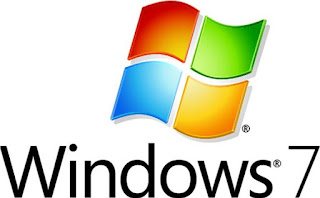Windows, in computer science, PC operating framework sold by
Microsoft Corporation that enables clients to enter directions with a pointing
gadget, for example, a mouse, rather than a console. A working framework is a
lot of projects that control the fundamental elements of a computer. The
Windows working framework gives clients a graphical UI (GUI), which enables
them to control little pictures, called symbols, on the computer screen to
issue directions. Windows is the most generally utilized working framework on
the planet. It is an expansion of and trade for Microsoft's Disk Operating
System (MS-DOS).
The Windows GUI is intended to be a characteristic, or
natural, workplace for the client. With Windows, the client can move a cursor
around on the computer screen with a mouse. By pointing the cursor at symbols
and clicking catches on the mouse, the client can issue directions to the
computer to play out an activity, for example, beginning a program, getting to
an information record, or duplicating an information document. Different
directions can be come to through draw down or click-on menu things. The
computer shows the dynamic region where the client is functioning as a window
on the computer screen. The as of now dynamic window may cover with other already
dynamic windows that stay open on the screen. This sort of GUI is said to
incorporate WIMP highlights: windows, symbols, menus, and pointing gadget, (for
example, a mouse).
Microsoft started its improvement of a GUI in 1983 as an
expansion of its MS-DOS working framework. Microsoft's Windows adaptation 1.0
initially showed up in 1985. In this form, the windows were tiled, or
introduced by one another as opposed to covering. Windows variant 2.0,
presented in 1987, was intended to take after IBM's OS/2 Presentation Manager,
another GUI working framework. Windows variant 2.0 incorporated the covering
window include. The more dominant variant 3.0 of Windows, presented in 1990,
and ensuing adaptations 3.1 and 3.11 quickly made Windows the market chief in
working frameworks for PCs, to some degree since it was prepackaged on new PCs.
It likewise turned into the favored stage for programming advancement.
In 1993 Microsoft presented Windows NT (New Technology). The
Windows NT working framework offers 32-bit performing various tasks, which
enables a computer to run a few projects at the same time, or in parallel, at
rapid. This working framework contends with IBM's OS/2 as a stage for the escalated,
top of the line, organized figuring conditions found in numerous organizations.
In 1995 Microsoft discharged another adaptation of Windows
for PCs called Windows 95. Windows 95 had a sleeker and more straightforward
GUI than past forms. It additionally offered 32-bit handling, proficient
performing multiple tasks, organize associations, and Internet get to. Windows
98, discharged in 1998, enhanced Windows 95.
In 1996 Microsoft appeared Windows CE, a downsized variant
of the Microsoft Windows stage intended for use with handheld PCs. Windows
2000, discharged toward the finish of 1999, joined Windows NT innovation with
the Windows 98 graphical UI. In 2000 an exceptional release of Windows known as
Windows Millenium Edition, or Windows ME, gave a progressively steady form of
the Windows 98 interface. In 2001 Microsoft discharged another working
framework known as Windows XP, the organization's initially working framework
for customers that did not depend on MS-DOS.
Other prevalent working frameworks incorporate the Macintosh
System (Mac OS) from Apple Inc., OS/2 Warp from IBM (see OS/2), and UNIX and
its varieties, for example, Linux.






No comments:
Post a Comment